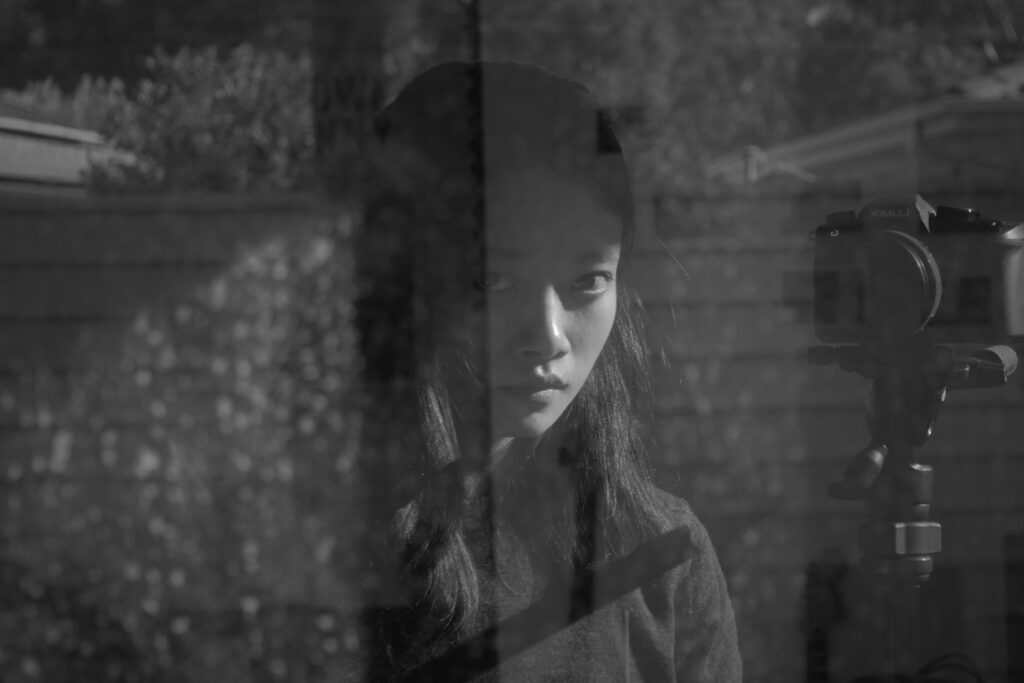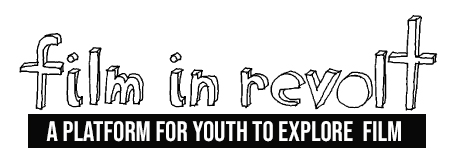
Isabelle from Film in Revolt spoke with Allison Chhorn, director of The Plastic House, a meditative, experimental take on memory and healing. which screened at the 2020 Sydney Film Festival.
Isabelle: When envisioning your movie what was the process? What ideas came first?
Allison: Because I lived and worked in the environment you see in the film, it was a gradual process and my initial ideas were really to capture the atmosphere of the greenhouse. There’s a surreal feeling you have when you’re working there for a long time – after a while, reality seems to shift.
Was there any difference between the experiences of shooting the greenhouse to the opening scene?
Yes, there’s a lot of documentary scenes of me working in the greenhouse and a lot of stylised staged scenes which is what the opening is. There’s a mixture of styles.
Was there one style that was more impactful?
It was exciting for me to try to create more cinematic scenes and shots. I like the truth of documentary filmmaking and the unrefined look of that for some things but it’s not something I’m very good at presenting by itself.
Was film a big part of you growing up?
To be honest, I don’t think so. I grew up with really mainstream stuff until I went to uni and started to look into more serious and world cinema and that was like when I was 20 or so. I felt like I was late getting into serious film watching and being exposed to arthouse cinema.
Did you have a particular film that started off your film journey?
I can’t remember a particular film, but there were certain directors. I rented DVDs on my own and there were filmmakers like Chantal Akerman and Andrei Tarkovsky. I was also really drawn to Asian filmmakers and their style and aesthetic like the Taiwanese filmmakers Hou Hsiao-Hsien and Edward Yang. Their films really spoke to me.
You talk about the repetitive nature of planting and pruning your greenhouse for your film but also fears of loss and change. How did it feel making these conflicting ideas you experience into a film to be shared with others?
To me they aren’t conflicting ideas, they feed off each other. If you think about grief- It’s hard to describe, but my idea was that the repetitive nature of working in the greenhouse and this monotonous work was a way to deal with the grief and to kind of move and be active while also still being in that state.
You speak of being from two different cultures. What was it like shooting with that identity? Was there a stronger influence from one?
For me and maybe a lot of other migrant people that have families that migrated over here to Australia, there is not a clear distinction between one culture and the other but there is a very mixed, hard to define kind of combination. My Cambodian parents and their culture is really intrinsic to the film: the fact that we owned a farm and a greenhouse and did manual labour, but my education was really brought up in the Australian school system and so it’s really just a mixture.
You foreshadowed the fear of your house collapsing with the crack in the wall. Were there any other personal Easter eggs in the movie that may not be picked up by the viewers?
Yeah, the crack is an obvious example of that. There is also the shovel which you see the character holding at the end and you also see it around two 3rds in, where the character is digging to make like a well for the water to go in and that was maybe one or so ‘little easter eggs’.
You have a background in music and have connected music to film through music videos. There was a lot of ambient sound in your film but you also are pictured listening to music with lots of different records around. You talked about the emotions you feel through natural noises, but did non-organic/ more structured sound and music have any effect on your filmmaking process?
I’m really glad you asked this question and made the connection to music because obviously the film is mostly natural location sounds and I intended for that from the very start because I’ve always felt that it’s hard not to use music in film in an overpowering way. But to me, making films and making music is very similar because there is a structure and dynamics. It’s a way for me to think about motifs and how certain sounds can relate to certain emotions.
Did you have a different soundtrack for different bits of the film or was it all in one?
The soundtrack is made up of a collection of different natural sounds. I used sounds like motifs and gradually built them up over the course of the film, accumulating more intensity – like the water drops turning into pouring rain or the slight whisper of wind becoming a thunderstorm. There’s also a drone-like sound that isn’t very overpowering but it’s beneath the surface of everything, creating a kind of tense atmosphere throughout. I think sound is a very good way of making you feel something before understanding it, and I think that’s how all films should be experienced for the first time.
Allison Chhorn is a film-maker and multi-disciplinary artist incorporating video, installation, photography, painting and music composition. Her work explores themes of migrant displacement, trauma and the repetition of memory through screens of visual media. She holds an Honours degree in Visual Arts from UniSA. Her work has screened at Adelaide Film Festival, OzAsia Festival, FELTspace and Sydney Film Festival. The Plastic House is her first solo mid-length film, which had it’s international premiere at Visions du Réel.

Best film of the festival imo